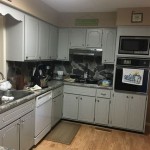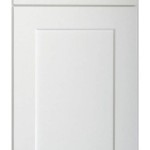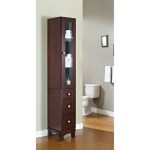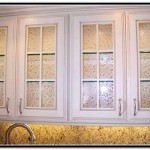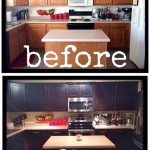Transform Your Kitchen With New Cabinets And Countertops
The kitchen stands as a central hub in many households. It is a space for meal preparation, social gatherings, and often serves as a focal point for the home’s overall aesthetic. Outdated or inefficient kitchens can detract from the home’s value and livability. Replacing kitchen cabinets and countertops represents a significant investment with the potential to dramatically improve the look, functionality, and value of a residence.
A kitchen remodel encompassing new cabinets and countertops offers a range of benefits, extending beyond mere aesthetic improvements. Strategic upgrades can enhance storage capacity, streamline workflow, and increase the kitchen’s durability and ease of maintenance. Careful consideration must be given to design choices, material selection, and professional installation to achieve optimal results.
Enhancing Functionality and Storage
One of the primary motivations for replacing kitchen cabinets and countertops centers on improving functionality and storage. Older kitchens often feature inadequate or inefficient cabinet layouts, leading to cluttered countertops and difficulty locating essential items. Modern cabinet designs offer a multitude of solutions to address these issues.
Options include pull-out shelves, drawer dividers, vertical storage for baking sheets and cutting boards, and corner cabinet solutions like lazy Susans or blind corner pull-outs. These features maximize usable space and minimize wasted areas within the cabinet structure. Furthermore, the choice of cabinet door style can significantly impact accessibility. Full-overlay doors, for instance, offer a cleaner, more contemporary look and allow for larger drawer fronts, increasing storage capacity.
Countertop upgrades can also enhance functionality. Durable materials like quartz and granite are resistant to scratches, stains, and heat, making them ideal for food preparation. Choosing the right countertop height is crucial for ergonomic comfort. For example, taller individuals may benefit from slightly higher countertops to reduce back strain during prolonged use. The inclusion of features like integrated cutting boards or recessed drainboards can further enhance the countertop's functionality.
The layout of cabinets and countertops is critical to kitchen workflow. The traditional kitchen work triangle, connecting the sink, refrigerator, and cooktop, aims to minimize steps and improve efficiency. When redesigning a kitchen, consider how frequently each appliance is used and arrange the layout accordingly. For example, placing frequently used items within easy reach of the cooktop can streamline meal preparation.
Elevating Aesthetics and Home Value
New cabinets and countertops can dramatically transform the aesthetic appeal of a kitchen. Replacing outdated or worn materials with modern options can instantly update the space and create a more visually appealing environment. The design possibilities are vast, allowing homeowners to customize the kitchen to their specific tastes and preferences.
Cabinet styles range from traditional raised-panel designs to sleek, contemporary flat-panel options. The choice of cabinet material also plays a significant role in the overall aesthetic. Solid wood cabinets offer a classic, durable option, while engineered wood products like MDF (medium-density fiberboard) provide a more cost-effective alternative with excellent paintability. The color and finish of the cabinets can be customized to complement the overall design scheme.
Countertop materials also contribute significantly to the kitchen's aesthetic. Natural stone options like granite and marble offer unique veining and patterns, adding a touch of luxury and sophistication. Engineered materials like quartz provide a consistent color and pattern, as well as enhanced durability and ease of maintenance. Laminate countertops offer a budget-friendly option with a wide range of colors and patterns available.
Beyond the individual components, the overall design concept is crucial. Consider the kitchen's architectural style and choose cabinets and countertops that complement the existing features. For example, a traditional kitchen might benefit from raised-panel cabinets with granite countertops, while a modern kitchen might feature flat-panel cabinets with quartz countertops and a minimalist design.
Improving the kitchen's aesthetics directly impacts the home's overall value. A well-designed and updated kitchen is a major selling point for potential buyers. Replacing outdated cabinets and countertops can significantly increase the home's market value and make it more appealing to a wider range of buyers.
Selecting Materials and Professionals
Choosing the right materials for kitchen cabinets and countertops involves careful consideration of factors like durability, aesthetics, budget and maintenance requirements. Each material offers distinct advantages and disadvantages, making it essential to evaluate the options based on individual needs and preferences.
For cabinets, solid wood provides superior durability and a timeless aesthetic. However, it is also more expensive and requires more maintenance than engineered wood products. MDF is a popular choice for painted cabinets due to its smooth surface and resistance to warping. Particleboard is a more affordable option but is less durable and susceptible to moisture damage.
Countertop materials vary widely in terms of cost, durability, and aesthetics. Granite and quartz are popular choices for their durability, heat resistance, and aesthetic appeal. Marble offers a luxurious look but is more porous and requires more maintenance. Laminate is a cost-effective option but is less durable and susceptible to scratches and stains. Solid surface materials like Corian offer seamless designs and are easy to repair, but they are less heat-resistant than granite or quartz.
The selection of a qualified and experienced contractor is crucial for a successful kitchen remodel. A reputable contractor can provide guidance on material selection, design options, and installation techniques. They can also ensure that the project is completed on time and within budget.
Verifying the contractor’s licenses and insurance is paramount. Checking references from previous clients can provide valuable insights into the contractor’s quality of work and level of professionalism. Obtaining multiple quotes from different contractors allows for a comparative analysis of pricing and services offered. A detailed contract outlining the scope of work, payment schedule, and warranty information protects the homeowner from potential disputes or unforeseen issues.
Professional installation is essential for ensuring the longevity and performance of new cabinets and countertops. Improper installation can lead to issues like uneven surfaces, misaligned doors, and premature wear and tear. A qualified installer will have the necessary tools and expertise to handle the installation process efficiently and accurately.
The process of selecting materials should also involve considering the long-term environmental impact. Opting for sustainable materials like bamboo or reclaimed wood can reduce the project's environmental footprint. Choosing low-VOC (volatile organic compound) paints and finishes can improve indoor air quality. Disposing of old cabinets and countertops responsibly, through donation or recycling, can minimize waste.
Furthermore, homeowners should proactively communicate their preferences and concerns to the contractor throughout the project. Regular communication ensures that the project stays on track and that any potential issues are addressed promptly. Establishing a clear line of communication and maintaining a collaborative relationship with the contractor contributes to a positive remodeling experience.
The selection process also extends to hardware choices for cabinets. Knobs, pulls, and hinges come in a variety of styles and finishes, influencing the overall aesthetic and functionality of the kitchen. Consider hardware that complements the cabinet design and provides a comfortable grip.
Lighting also plays a critical role in kitchen design and functionality. Under-cabinet lighting illuminates countertops and workspaces, while recessed lighting provides ambient lighting for the entire kitchen. Pendant lights can add a decorative touch and provide focused illumination over islands or peninsulas. Incorporating different types of lighting creates a well-lit and inviting kitchen environment.
Incorporating smart home technology into the kitchen remodel can enhance convenience and efficiency. Smart appliances, such as refrigerators with built-in touchscreens or ovens that can be controlled remotely, offer advanced features and functionality. Smart lighting systems allow for customized lighting control and energy savings. Integrating these technologies can transform the kitchen into a modern and connected space.

20 Ideas For Kitchen Counter Updates Extra Space Storage

How Cabinet Refacing Can Transform Your Kitchen Severna Park

21 Diy Affordable Ways To Redo Kitchen Cabinets Extra Space Storage

Transform Your Home The Benefits Of An Open Concept Kitchen Design

Remodeling Tips How To Transform Your Kitchen With A Cabinet Makeover Metke Luxury Homes

Kitchen Ideas Remodeling And Renovating In 2024 Model Remodel

Kitchen Remodel Trends To Breathe New Life Into Your Home

21 Diy Affordable Ways To Redo Kitchen Cabinets Extra Space Storage

Kitchen Redesign Ideas To Transform Your Space
Tips For Partial Kitchen Makeovers When You Can T Remodel It All Designed
Related Posts

